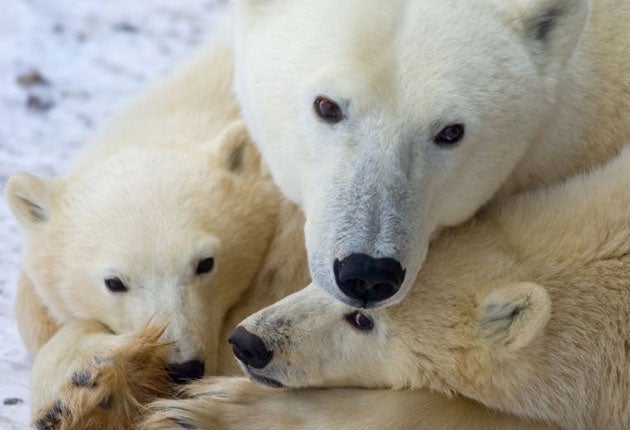The last kings of the Arctic
Polar bears may disappear as rapidly as the great buffalo herds from the American prairies. By Steve Connor

They may look cute and playful but these polar bears are the biggest land carnivores in the world and, as the top predator in the Arctic, they have a reputation for actively hunting humans. Pregnant females gave birth in November or December and many will still be buried in their snow dens to escape the worst of the Arctic winter, ready to emerge with their cubs next month with the first hint of the spring thaw. The rest of the estimated 22,000-strong population of polar bears roam in "walking hibernation" in anticipation of the winter's end.
These exceptional pictures of the polar bear were taken by the American photographer Steven Kazlowski who has spent the past 16 years travelling to the Arctic. The result is a unique photographic record of the region's biggest terrestrial beast, which Kazlowski has documented in his book The Last Polar Bear. "My hopes are that people will understand there is an environment as amazing as the one that great buffalo herds once roamed across North America, and that it's changing extremely rapidly because of the way we have chosen to live as a society, and its not too late for us to make some smart choices," he said.
Polar bears feed mainly on seals, which they hunt on the Arctic Ocean ice. But as rising temperatures cause the sea ice to shrink further each summer, the beasts find it increasingly difficult to eat enough for them to build up the necessary fat reserves which see them through the winter. An international assessment of the 19 sub-populations of the polar bear found in 2005 that five were in decline, five were stable, two were increasing and the state of the remaining seven could not be determined due to lack of data. Last year, the US Department of the Interior listed the polar bear as threatened under the Endangered Species Act.
The polar bear is perfectly adapted to temperatures that can plummet to -50C. Its two coats of fur and thick layer of blubber ensure little heat is lost. The bear's vast paws are armed with sharp claws, as well as fleshy bumps or papillae that prevent slipping on ice, and it can sniff out a seal several miles away.
"The intelligence and social abilities of polar bears is quite something," Kazlowski said. "I have watched polar bears break holes in ice to thaw out frozen meat, and they can wait for days at a seal hole without moving, which puts them in my mind to be a more Zen-like animal."
Subscribe to Independent Premium to bookmark this article
Want to bookmark your favourite articles and stories to read or reference later? Start your Independent Premium subscription today.

Join our commenting forum
Join thought-provoking conversations, follow other Independent readers and see their replies